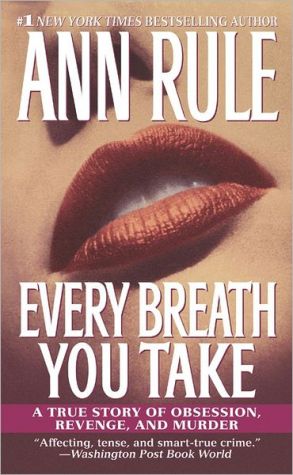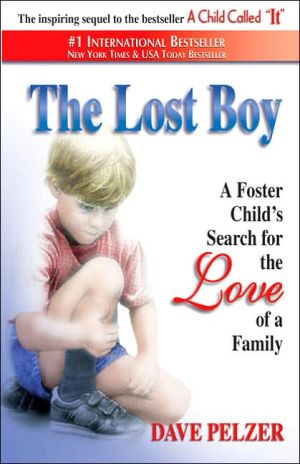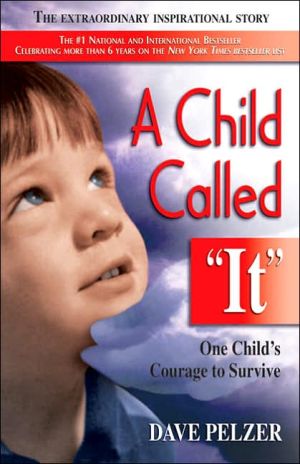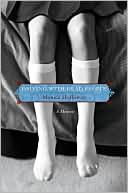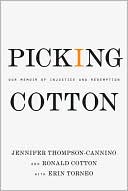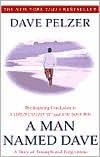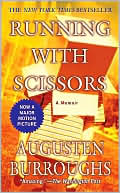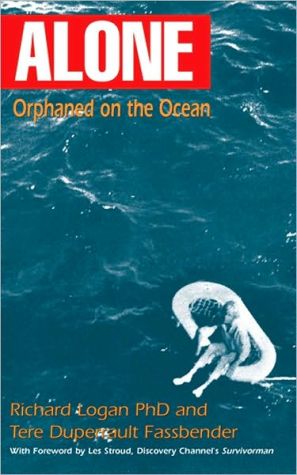Every Breath You Take: A True Story of Obsession, Revenge, and Murder
AMERICA'S #1 TRUE-CRIME WRITER FULFILLS A MURDER VICTIM'S DESPERATE PLEA — WITH THIS SHATTERING NEW YORK TIMES BESTSELLER\ "If anything ever happens to me...\ find Ann Rule and ask her to write my story."\ In perhaps the first true-crime book written at the victim's request, Ann Rule untangles a web of lies and brutality that culminated in the murder of Sheila Blackthorne Bellush — a woman Rule never met, but whose shocking story she now chronicles with compassion, exacting detail, and...
Search in google:
"If anything ever happens to me. . .find Ann Rule and ask her to write my story."In perhaps the first true-crime book written at the victim's request, Ann Rule untangles a web of lies and brutality that culminated in the murder of Sheila Blackthorne Bellush -- a woman Rule never met, but whose shocking story she now chronicles with compassion, exacting detail, and unvarnished candor. Although happily ensconced in a loving second marriage, and a new family of quadruplets, Sheila never truly escaped the vicious enslavement of her ex-husband, multi-millionaire Allen Blackthorne, a handsome charmer -- and a violent, controlling sociopath who subjected Sheila to unthinkable abuse in their marriage, and terrorized her for a decade after their divorce. When Sheila was slain in her home, in the presence of her four toddlers, authorities raced to link the crime to Blackthorne, the man who vowed to monitor Sheila's every move in his obsessive quest for power and revenge. Maureen Corrigan As only the most adept crime stories do, Every Breath You Take manages to absolve its readers from the guilt of reading about such gruesomeness by engaging us in higher-minded, rubber-gloved investigations into the fault lines lurking in the human psyche and the American landscape. Rule digs up details about Allen Blackthorne's disturbing childhood and early adult life that form a case study of the classic American con man crossed with the more exotic strains of the sociopath. It is an affecting, tense and smart true-crime story.
Chapter One\ Friday, November 7, 1997, was an ordinary day in Sarasota, Florida — or so it seemed. It was a weekday, and the morning began with the sun burning golden in an azure sky, but as one enthusiastic resident remarked, "The sun is always shining, and every day is beautiful in Sarasota. It took me a while to realize that I didn't have to take advantage of the days the sun shone the way I used to do in Connecticut; I could stay inside and read because there would always be another perfect day...and another...and another."\ But later on this November day, clouds moved in over Sarasota. They were a peculiar leaden gray-purple shading to black, full of unpredictable electrical impulses that made one's hair stand on end. It was going to rain, but it wouldn't be a soft rain; it would surely be rain that thudded against the earth with a vengeance, forcing trees and bushes to the ground with the sheer weight of water, pounding the grass flat.\ The entrance to the Gulf Gate subdivision was flanked by sweeping buff-colored brick walls bearing its name, but that was the limit of Gulf Gate's ostentation. In November the jacaranda trees planted there four decades ago were a froth of peach-colored blossoms, so lovely that they could not be real. Many of the summer flowers were faded, save some bougainvillea, and residents planted petunias and impatiens to carry them through the winter until the late summer sun's molten heat fried them.\ Once a family neighborhood where children played, Gulf Gate was home now to many older couples and widows, who kept their shades drawn and hired yardmen to mow their lawns and prune their glossy-leafed trees into round orbs that looked like green plastic. Gulf Gate was close enough to Bee Ridge Road and I-75 for easy shopping and access to downtown Sarasota, but it was quiet, the streets hushed and almost free of traffic in the middle of a weekday. More often than not, there was no one walking a dog, or even peering out at the street from behind jalousie windows, those windows whose very name originates in the French word for jealousy — "to see without being seen." But few of the residents watched from their cool rooms, because there was nothing to see outside.\ One woman who lived in Gulf Gate was watchful, almost unconsciously moving often to the front windows of her home to scan the street for a strange vehicle or for someone she didn't recognize approaching her house. She had good reason to be leery, although she and her husband had taken every precaution to keep their address secret.\ Most of the homes in Gulf Gate were owner-occupied, not lavish but very comfortable L-shaped ramblers, painted in the soft pastels of the Florida gulf coast, peach and pink and even lavender — sunrise and sunset colors. Many had Florida rooms and swimming pools to make up for Gulf Gate's distance from Sarasota Bay. Although the neighborhood was far away from the beach, the November air was usually drenched with the salty-clean smell caught in the wind as it raced east toward the Atlantic Ocean.\ Much like the rest of Gulf Gate, Markridge Road was a wide, tree-lined street with single-story houses set on small, perfectly groomed lots. The white rambler with the yellow door and matching shutters in the 3100 block had once been the cherished home of an elderly couple. By 1997 they were both dead, leaving their house and its furnishings to their son. Most of the time he lived in a northern state and rented out the Markridge house. He had changed nothing; the place was frozen in a time warp with furnishings that were modern three decades earlier. "All the furniture, even the knickknacks, dated back to the sixties," one former renter recalled. "But there was a warmth about that house. Everything was still there, even their old sheet music and books, just the way they left it. We enjoyed that when we lived there."\ The couches and chairs reflected the tastes of another time, but they were comfortable. The appliances were decades old too. The refrigerator was avocado green and the stove bright yellow — but they worked. The phone bolted to the kitchen wall above the dishwasher had a rotary dial. It took a lot longer to make a call than a push-button phone, but until November 7 that was merely inconvenient and not disastrous.\ The young couple who moved into 3120 Markridge Road in September 1997 had the look of dependable tenants, and they seemed to be pleased with the house even though they had six children and would have to squeeze to fit everyone in. They said they'd moved from Texas when the husband got a big promotion and they needed someplace to live in a hurry. Looking at their adorable bunch of toddlers, the landlord couldn't say no to them. He decided he could forgo occupying his parents' house for one winter.\ The new renters had an excellent credit history, and they were attractive. Jamie Bellush was big and burly with the wide grin and the innate charm of a seasoned salesman. His wife, Sheila, was delicately pretty, very tiny and blond. Jamie did most of the talking, while Sheila seemed a little nervous. Well, the landlord figured, she had reason to be, with all those children to care for. The toddlers were winsome and totally captivating, and it was obvious that their parents adored them. The older girls' names didn't seem to fit them. The older sister, thirteen, was called Stevie, and she hovered over the babies as if she was a second mother to them. The other sister was a year younger, and her name was Daryl. Odd. Why would anyone give boys names to two very pretty girls?\ Jamie Bellush explained that they were in the process of building a much larger home in Sarasota, so they could make do in cramped quarters until their house was finished in the spring.\ No one in Sarasota knew that the couple had left a dream house 1200 miles behind them in San Antonio. It had been their ideal house in a wonderful neighborhood, so large that the Markridge rental would fit inside three times over. They had barely had a chance to live in it when they felt a desperate urgency to move. And move they had, under cover of darkness.\ Only a handful of people in San Antonio knew where Jamie and Sheila and their six children were. They agreed it was best to tell no one except for their closest friends and relatives, including the couple who helped them move out of Texas in the dead of night. Sheila's family knew where they were in Sarasota and had their phone number, but not their street address. Maybe in time they could come out of hiding. It hurt Jamie and Sheila not to be in contact with so many people they loved, to contemplate holidays without those who were so important to them. Cutting off her life so abruptly was akin to cutting off her arm. Sheila only hoped that everyone understood that she had no choice.\ Sarasota was a beautiful place to live, and thousands of people had chosen it because of that.\ There was a magical blending of sea and land, merging so easily that it was difficult to see where Sarasota Bay ended and the sandy shoreline began. All the way south from Tampa, little lakes and rivers were mirrors reflecting the blue sky, and the soaring Sunshine Bridge rose like a giant roller-coaster over Tampa Bay. But it was dark when the Bellush convoy crossed it and they hadn't realized how high they were.\ Had her circumstances been different Sheila would have loved the colorful history of Sarasota and the way the city embraced the arts. She still looked forward to exploring it with her girls and the babies when things were better. Although Ringling Brothers no longer wintered there, seventeen other circuses did and many circus folk lived there permanently. Ringling Brothers had thanked Sarasota with a wonderful art museum and a college.\ There were sand castle contests, blues and jazz festivals, book fairs, local dramatic productions and Broadway plays on tour and the venerable Sarasota Opera House where the great Pavarotti once performed. Every season in Sarasota was packed with all manner of celebrations. Sheila loved to read and the new Sarasota library was huge and airy and filled with sculptures and soaring mobiles.\ Marina Jack's in downtown Sarasota just off Route 41 — also known as the Tamiami Trail — was the kind of restaurant Sheila would enjoy, with its circling staircase and magnificent water views. Someday, perhaps. For now, she and her younger children were entranced with simpler things like the tiny, tiny dust-colored lizards that darted from leaf to leaf and scuttled under bushes so quickly that they almost seemed to be figments of their imaginations. The cost of living was higher than in San Antonio; the rent on their house was a rather shocking $2300 a month. But Jamie and Sheila had chosen Sarasota because it might be a safe place to hide and, eventually, to start over.\ One day they hoped to be able to be in contact with the people they loved, but for the moment they couldn't do that. They could give their address to very few people, and even that was a commercial mailing service, a "suite" that was really a locked mailbox in a mall. They might as well have been in a witness relocation program. Although both Sheila and Jamie came from loving, extended families, they were essentially alone.\ James Joseph Bellush was an ex-marine, still saddled with his childhood nickname in his mid-thirties, although he no longer looked like a "Jamie." He looked more like a football linebacker. Jamie was a detail man — a pharmaceutical salesman for Pfizer, and he was very good at it, an asset to the company. The very nature of his career meant that he often had to travel away from home to call on physicians in their offices along the west coast of Florida. It wasn't hard to sell Pfizer products, especially with the emergence of Viagra, but he still had to make his rounds. Jamie had been with Pfizer for a long time, and when he asked for a transfer out of San Antonio, the company accommodated him and gave him the Florida territory, a promotion. They even arranged to buy his house in Boerne, Texas, for the man who would replace him.\ Sheila Bellush was thirty-five. She had worked in attorneys' offices since she was eighteen and had held an extremely responsible position in the law offices of Soules and Wallace in San Antonio for years. But now she was a full-time mom; there was no question at all of her going to work outside the home. She had more than enough to do. If she was discouraged at the prospect of fitting everyone into the Markridge house and being alone with their children while Jamie was on the road, she didn't complain. She did what she had to do, hoping always that their lives would become safer and calmer as time passed.\ Sheila had no friends in Sarasota when they arrived in September, but she was working on that. She had always had friends, and it saddened her to have to leave so many behind without an explanation, although she suspected most of them knew why she had fled. Deeply religious, Sheila and Jamie were attending services at the Sarasota Baptist Church. It was a huge church with an active outreach program, and they were made welcome there. It was a start. They were rebuilding their lives, and she knew she could make new friends.\ And so November 7 was an ordinary day, but only in the context of Sheila Bellush's life. In truth there were no ordinary days for Sheila; she had lived with fear so long that it seeped like acid into any fleeting serenity she might attain, corroding her thoughts, sending jets of adrenaline through her veins. No matter how the sun shone or how balmy the winds wafting off the bay, Sheila never really felt safe unless she was inside the house with the doors and windows tightly locked against the world. Those who didn't know her well wondered if she might be just a little paranoid. Those who knew her story understood, but they were far away and didn't know how to find her. It was safer that way — safer for them and safer for Sheila, Jamie, and their six children.\ Just two months earlier Jamie and Sheila had lived in Boerne, Texas, a countrylike suburb northwest of San Antonio, where they owned their wonderful new home. Now it seemed as though they had never lived there at all. Maybe it had been too perfect to last.\ But Sheila still had Jamie, and he loved her and protected her and their babies. He had begun the paperwork to adopt Stevie Leigh and Daryl Leigh, Sheila's teenage daughters by her former husband, Allen. They had their difficulties trying to get naturally rebellious teenagers and a longtime bachelor on the same wavelength, but Sheila believed things would work out.\ On November 7, 1997, Jamie was on the road south of Sarasota, planning to visit several doctors' offices for Pfizer. It was important that he familiarize himself with his new territory and potential clients in west Florida. But it was Friday, and he had promised to be home long before it was dark. They would have the weekend together. Sheila had no doubt that they would spend the rest of their lives together.\ She was half right.\ Stevie Bellush, thirteen, was petite and small-boned like her mother, although she had her father's facial features and his dark hair. It was not difficult to say where she got her superior intelligence, because both Sheila and Allen, her father, were very smart. Stevie and Daryl, who was blond like Sheila, had always excelled in school and in sports. But they had been through a lot for anyone as young as they were; their childhoods hadn't been easy.\ Now Stevie was in a wonderful mood as she hurried home from junior high school shortly before 4:00 P.M. that Friday. "I heard that a boy I liked was going to ask me out," she remembered. "And I wanted to tell my mom."\ The front door was unlocked, and that was strange; her mother was adamant that they all lock the doors when they left, and even when they came back in after taking the garbage out. She didn't have a lot of rules, but that was one she insisted on. So it was unusual for the front door to be unlocked.\ Afterward Stevie would remember that she couldn't make sense out of the first thing she saw when she walked into the front room. All of the babies were standing in the hallway crying as if their hearts would break. Her mother never let them cry; she always picked them up and soothed them. For some reason they had no clothes on — nothing but the little life vests they wore when they were in the swimming pool in the Florida room. Their faces were swollen from sobbing. Stevie thought they must have been crying for a long time.\ What made the least sense to Stevie were the funny patterns of dark red specks on the babies' skin, some in their hair and on their feet. Some of them had swaths of the same color, as if someone had dipped a brush in red paint and then daubed at their flesh.\ Shock and disbelief often block the mind from accepting what the eyes perceive. Even so, Stevie's dread was so great that there was a thunderous pounding in her ears. She patted the wailing toddlers absently and went looking for her mother, calling out for her as she moved through room after room.\ Her own voice seemed to echo and bounce back from the walls. Stevie went out in the backyard and found no one there. She skirted the swimming pool in the Florida room and saw the babies' diapers inside their plastic pants on the table beside the pool, still shaped like their bodies. That wasn't strange; her half brothers and sister swam naked. If their diapers were still dry, her mom just put them back on after they swam. But she hadn't done that. All of their little bottoms were bare under their life jackets. Stevie couldn't figure out what was going on. She kept calling for her mother, and no one answered.\ There was a funny smell in the house too — a hard, sweet iodiney-metallic odor, a smell Stevie could not recognize....\ Copyright © 2001 by Ann Rule
\ From Barnes & NobleAnne Rule, the reigning queen of true crime, scores yet again with this thrilling tale of murder and intrigue. When Sheila Blackthorne Bellush is murdered, her husband -- a man the victim had learned to mistrust and fear -- is instantly suspected. But first he must be caught, and that would prove to be difficult. As usual, Rule is adept at exposing the sadistic ruthlessness that lies behind the seemingly happy American home.\ \ \ \ \ Maureen CorriganAs only the most adept crime stories do, Every Breath You Take manages to absolve its readers from the guilt of reading about such gruesomeness by engaging us in higher-minded, rubber-gloved investigations into the fault lines lurking in the human psyche and the American landscape. Rule digs up details about Allen Blackthorne's disturbing childhood and early adult life that form a case study of the classic American con man crossed with the more exotic strains of the sociopath. It is an affecting, tense and smart true-crime story.
